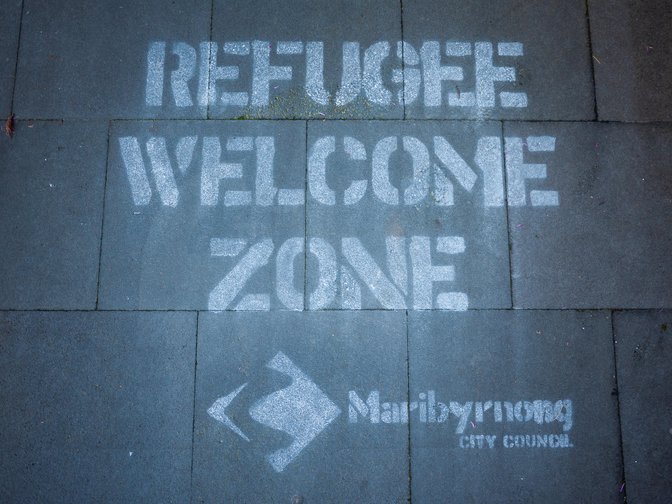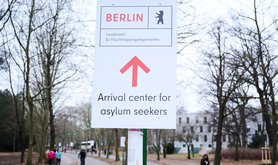
Australia badly needs a plan to make refugee settlement work
Pandemic has highlighted government shortcomings on regional integration, racism and suitable working visas for new arrivals

In 2019 the Australian federal government set a target to have 50% of new refugees settle in regional Australia by 2022. However, these areas away from the big cities have historically had difficulties retaining migrants, including refugees, and the government still has no overarching plan to address this.
Though the refugee resettlement program is largely paused at the moment due to COVID-19, when the borders reopen and refugees begin arriving again, the government will need a comprehensive strategy to encourage them to set up home in Australia’s lesser known regions.
Supportive environments
The lure of larger cities can lead refugees to leave regional areas in search of greater employment and educational opportunities as well as more diverse cultural communities.
For people to stay, what they need is supportive environments that link them to work and provide a greater sense of belonging.
Help us uncover the truth about Covid-19
The Covid-19 public inquiry is a historic chance to find out what really happened.
Of course, employment is a key priority for new arrivals. But employment levels among refugees in Australia remain below the general population’s rate. In 2020, a study found that around two thirds of refugees were still unemployed five years after arriving in Australia. Creative solutions are therefore needed.
A more coordinated and scaled-up approach across government in providing training and matching skills of incoming refugees to regional needs is vital.
Close collaboration with local employers is also key if refugees are to secure appropriate work and to be encouraged to stay.
There are several previous examples of such employment initiatives such as a duck business employing significant numbers of Karen refugees, and a farming initiative connecting refugees from farming backgrounds to farmland they could use. However, regional economies have been hit hard by the pandemic and there are labour shortages, particularly in the agricultural and horticultural sectors.
Challenges
The pandemic has brought new challenges to regional areas seeking to attract and retain new residents. One of the most salient ones is affordable housing which was previously an appeal for refugees resettling in rural areas.
There are currently almost 20,000 people recognised as refugees living on temporary humanitarian visas in Australia
However, the pandemic has brought more people to the regions as many seek lower density housing, thus making property increasingly unaffordable.
Increased supply of public and affordable housing, rent subsidies and provision of ‘head-leased’ properties for new arrivals at capped rent are needed to help address this brewing crisis. In the longer term some regional areas may need to be reassessed as suitable locations for focused resettlement.
Another challenge is the fact that regional areas often have lower cultural diversity, and new arrivals can experience racism and intolerance.
With a noted rise in racism across Australia and internationally in the wake of Covid-19, efforts to create inclusive environments are particularly crucial, especially for refugees who may have experienced trauma. Diverse cultural communities can help refugees feel a sense of belonging.
Local initiatives – such as Welcoming Cities – which are designed to create a sense of inclusion for new arrivals play an important role here.
Expanding such initiatives and working in partnership with receiving communities in regional areas will help prepare local communities and encourage new arrivals to remain.
Pathways to permanent resettlement
As part of harsh immigration policies that include turning back boats from Australian waters, and offshore processing, indefinite detention and no pathway to permanent resettlement for boat arrivals, there are currently almost 20,000 people recognised as refugees living on temporary humanitarian visas in Australia.
One of these visas – the Safe Haven Enterprise Visa (SHEV) was specifically designed to attract refugees to the regions and requires holders to indicate an intention to work and/or study in a designated regional area.
However, SHEV holders do not have access to the same services, rights and residency or citizenship pathways as permanent humanitarian visa holders. This means that these temporary visas exacerbate the insecurity that is so damaging for integration and mental health.
The impact of this precarity has been seen over the course of the pandemic. Australia’s policies concerning COVID-19 financial support for temporary visa holders left many in financial stress and some were reluctant to seek help for fear it may affect their visa status.
A recent parliamentary enquiry has recommended providing easier pathways to permanency for skilled migrants as well as international students. However, while SHEVs notionally hold the promise of a pathway to a permanent skilled visa, so far no-one has been granted permanency due to stringent language, education and work criteria, compounded by the impact of the pandemic on the employment market.
Given the economic imperative for Australia to increase its migration program and fill labour shortages in regional areas, providing humanitarian visa holders already in the country with permanent resettlement is a logical next step. In the short term, one option is to offer a permanent visa to temporary refugees in exchange for filling labour shortages caused by COVID-19 border closures.
Community sponsorship
A government commissioned review of the Australian humanitarian program in 2019 recommended a larger community sponsorship program, with a focus on regions which would allow individuals to directly engage in refugee resettlement efforts. However, thus far it has been a small component of Australia’s humanitarian program compared to countries such as Canada.
The current scheme – the Community Support Program (CSP) – allocates 1000 places each year but these places are deducted from the overall humanitarian program quota of 13,750. The high costs (up to A$100,000) for sponsors and a focus on job readiness and particular countries of origin have the potential to undermine the protection focus of the humanitarian program.
A recent parliamentary review of the CSP has also highlighted that it has failed to engage communities in the program. As such, Australia has some important lessons to learn from Canada, in terms of involvement of broader communities in regional areas in sponsorship, and community sponsorship as an expansion of the humanitarian program.
It’s time to be visionary
This is the perfect time for Australia to be visionary in its policies for the benefit of both refugees and its regional towns. But targets are not enough to build a successful regional resettlement program.
New arrivals need to be better supported within regional areas, and immigration policy reform is required to facilitate pathways to permanent resettlement and expand community sponsorship. An overarching focused strategy is required to guide this, and this must be developed in partnership with regional and refugee communities.
The pandemic has indeed highlighted the importance of such a coordinated and participatory approach, and that Australia’s temporary visa system requires urgent reform.
Read more
Get our weekly email





Comments
We encourage anyone to comment, please consult the oD commenting guidelines if you have any questions.